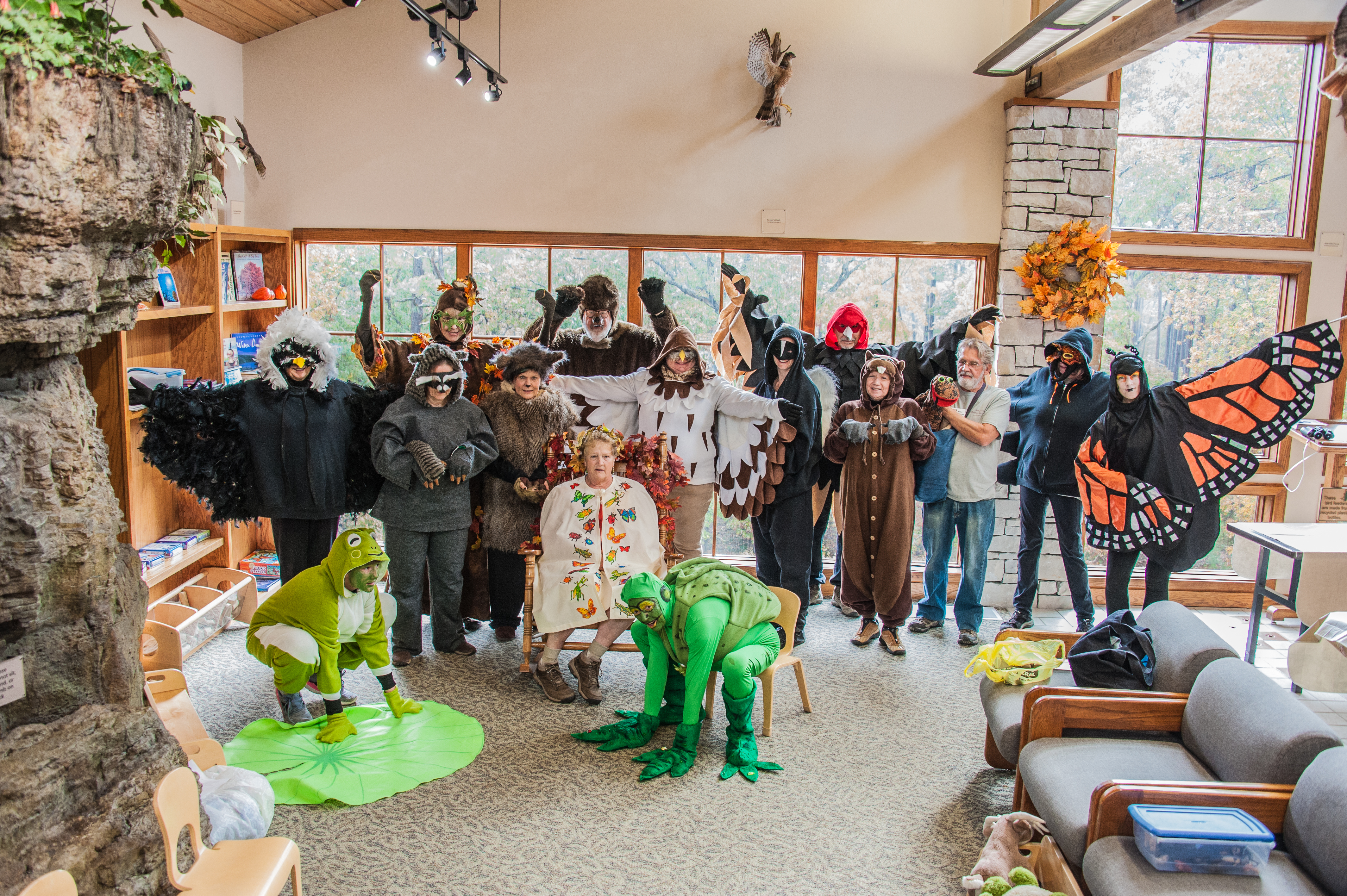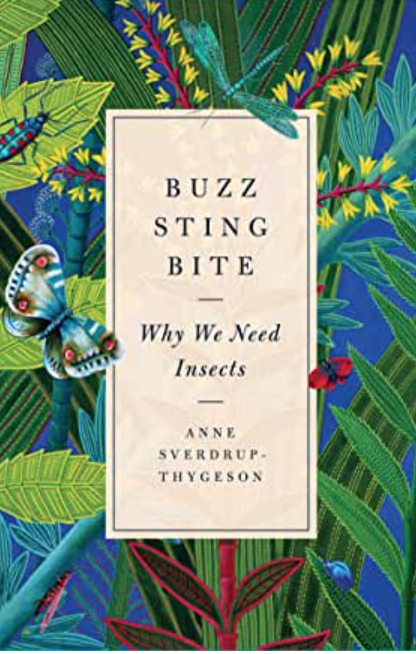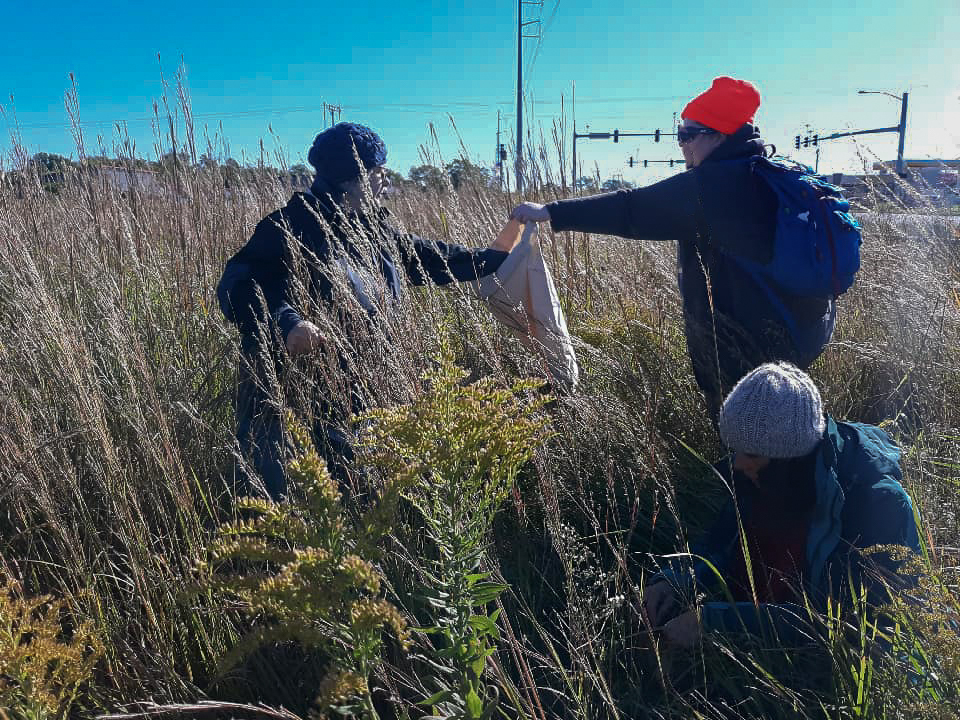Working to Keep Arkansas
in its Natural State | | | NWAMN
Newsletter of the Northwest Arkansas Master Naturalists
Inspiring a Love of Nature | Citizen Scientists | Stewards of Nature | Educating All Ages |  | | Even the inclement weather couldn’t keep the visitors or critters away from the Hobbs State Forest and NWAMN Chapter’s Living Forest presentation Saturday, October 26th. Steve Sampers and the Hobbs staff executed Plan B - the Indoor Option with the rain that was falling. So the outdoor discussions were moved indoors and not a single visitor’s enthusiasm appeared to be dampened.
The audience was entertained and informed with visits from Mother Nature (Care Butler), a Black Bear (Tom Edmiston), a Beaver (Sabrina Miller), some Frogs (Phyllis Stair and her granddaughter, Erica Holder), a Bald Eagle (Carol Sue Wooten), a Racoon (Patty Severino) and Skunk (Laura Stillwell) team, a Barred Owl (Lisa Edmiston), a Squirrel (JB Portillo) and an Oak Tree (Gracie Turley), a Spider (Kathleen Holloway), a Monarch Butterfly (Danielle Dozier), a Snake (Mike Holloway), and acting as “clean-up” was a Turkey Vulture (Jerry Hembd). |  | Table tops were conducted for fur/pelt identification (Darrell Rice and Paul Springer), NWAMN (Vanessa Helms and Shawn Hunter), Forest Finds (Denis Dean), Wildlife Photo ID (Mariellen Griffith and Jeri Henson), Greeting (Steven Kick), and Create-A-Badge table (Lori Rice)
Visitors were provided with very informative talks from the critters which gave the audience a lot of opportunity to engage with critters and share a bit of their own knowledge.
And of course the NWAMNs had plenty of support from the Hobbs State Parks staff who estimated the critters talked to more than 100 visitors!
Click HERE for many more photos from this VERY enjoyable and entertaining production. | | |
Purposeful Interpretation:
Bridging the Gap for Nature | | Have you ever found yourself lost for words when trying to explain why it is important to protect the natural world? Or what about sitting in a conference room during a power point presentation, and finding yourself nodding off during the meeting? As Master Naturalists, we have all had experiences that we know could have made a greater impact. Now think back to those magical moments that stuck with you, and why that memory is forever ingrained in your brain. | | In this session, we worked on purposeful interpretation, and how to create WOW moments that your audience will never forget. This program is designed as a special event to launch a new NWAMN Chapter interest group exploring interpretation.
The group not only gained some valuable insight into the art of interpretation, they also had a lot of fun!
| | | 15,892
That’s how many hours the NWAMN volunteers donated last year! That’s A LOT of hours. And with many new NITs in the class of 2019 we should far exceed that number but ONLY if we all get all our hours entered. So take some time soon and make sure you can enter the website at nwamn.org or you can click HERE.
And no worries if you forgot your Login or Password, you can request a reset right on that log in page.
| |
Forgot Login or Password?
If you forgot your password or login you can just click on the "Forgot My Username/Password" link as shown to the right to get back up and running. | | | | How To Enter Hours Video
If you need a refresher on how to enter hours into the website, click HERE for a tutorial on how to enter hours.
Or if you are already logged in you can QUICKLY and get to the Entry Page to enter hours by clicking on the stopwatch on the home page. See graphic to the left. | | | | The 2009 NWAMN NIT class had 38 members and then the annual NIT numbers fell off slightly until 2015 afterwhich the numbers have grown exponentially with 2019 having a total of 91 NITs! 91!! And while we have lost members over the course of 11 years (411 total NITs but 302 current active members) the recent growth is significant and bodes well for the health of the organization as well as the public’s interest in our mission AND the efficacy of the recruitment efforts.
| | | In the month or so since the NWAMN iNaturalist Project was announced we have had a lot of new entries in the Project. If you are already using iNaturalist make sure to join this project. If you are not already using iNaturalist you can make an account HERE and then search for the project NWA Master Naturalist Observations. There are also other local projects you can join that would appreciate your help. | Book Club News
The book club meets the third Thursday of the month at the Shiloh Museum General Store in Springdale from 6-8PM.
The Book Club selections are:
November -The Wilderness World of John Muir: A Selection from His Collected Work. Edited by Edwin Way Teale
| |
Volunteer Opportunities
Make sure to check out the volunteer opportunities. There are TOO many to list so check out the NWAMN Calendar HERE for all the great and varied opportunities. (NOTE: Log into your NWAMN account to see the full calendar of events.) | | | Fun Facts
This month’s Fun Facts are taken from the October Book Club Selection Buzz, Sting, Bite by Anne Sverdrup-Thygeson. Check out the book for many, many more fun and VERY interesting facts about the most diverse Class of the Animal Kingdom.
|  | |
1. Dragonflies are supreme hunters. Lions may put on an impressive display when they’re hunting in a pride, but they manage to chase down their prey only one in every four times. Even the great white shark, with its terrifying three-hundred-toothed grin, fails in half of all its attempted attacks. The dragonfly, however, excels as a lethal hunter, succeeding in more than 95 percent of its attempts.
2. The longest lived insect. The seventeen-year cicadas are, in fact, the longest-lived insects we know of, along with their cousins the thirteen-year cicadas.
3. Don’t like spiders? When it comes to spiders there are fresh estimates of how much insect meat the massed spiders of the world actually devour in a year. And it is far from trifling: the planet’s eight-legged arachnid population gobbles down between 400 billion and 800 billion tons of insects a year. That’s more than the entire human population manages to polish off even if we combine meat and fish consumption. (While not an insect, still a pretty amazing fact.)
| | | | 4. How does a fly eat? Well, it uses digestive enzymes from its belly to turn the food into a smoothie. To do so, it has to regurgitate some of its gastric juices onto the food, which isn’t so great for us because it means that bacteria from the fly’s last meal— possibly far from anything we’d classify as food—may end up on our slice of bread. | |
5. Zebra Stripes. By the way, have you ever wondered what color the zebra is beneath its stripes? Well, its skin is not striped; it is black. In other words, the zebra is black with white stripes and not vice versa. There’s a handy piece of trivia for your next cocktail party. (Again, not an insect but a fun fact.)
| | |
Until recently, Tom and Lisa Edmiston lived on a fifty acre farm in Benton County. Then, feeling the crush of development surrounding them, they moved to a peaceful ten acres near the Kings River in Madison County. They call their new home, which is surrounded by native gardens and woodlands, “a paradise.”
Since becoming Master Naturalists, Tom in ‘15 and Lisa in ’17, they have been involved in many different volunteer activities. “Try everything,” Lisa advises, “You may discover a new passion.”
“I cannot believe the things that I’m doing as a master naturalist,” adds Tom, “compared to what my life was before I joined and took the training.”
|
Tom points out his new-found passion for interpretation. He recently received his certification from the National Association for Interpretation (NAI) and is looking forward to sharing his passion for nature with others.
Among other things, the Edmistons have participated in the Living Forest at Hobbs State Park; trail work at numerous locations; work with the native plant group; lead a stream monitoring team and have built and installed blue bird boxes. “I hope I am making a difference for the future of the planet,” says Tom. In their spare time, Tom can be found in his wood shop and Lisa in her sewing/weaving room.
- Charlotte Kemp
| | |  | And below are Miss Barred Owl and Mr. Black Bear, the Edmiston’s alter egos as they appeared at the Living Forest. | NWAMN Activities Throughout The Area
|  | | Eleven Master Naturalists attended the monthly Book Club at the Shiloh Museum General Store to discuss Buzz, Sting, Bite by Anne Sverdrup-Thygeson. A lively discussion was had by all attendees. In addition to discussing the book, members also talked about making donations of books to local libraries and schools.
Further discussion will be conducted and recommendations of books decided. Stay tuned here for more information about this worthy cause. |  | Lots of NWAMNs showed up for the Seed Cleaning Workshop at the Washington County Extension Building in Fayetteville. Bags and bags and bags of seeds were cleaned by the team. Reference books, tweezers, strainers, microscopes, websites were all used in the identification of the seeds.
This is the first of several workshops which also include pot cleaning and planting.
The fruits of their handiwork will be felt for years to come throughout the area. | | |
| The Trails Team has been busy, as always. Here is a brief recap of some of their work:
Buffalo River Trail: We assisted the NCAMN crew in clearing and trimming a section of trail near Ponca on 9/28.
Lake Sequoyah: Joined Beaver Watershed Alliance and Fayetteville Park and Rec in cleaning up lake shore on 7/23 and 10/12.
Searles Prairie: Trimming and trash pickup between the sidewalk and fence on 7/18 and 9/25.
Lake Wedington: Ongoing trail work and downed tree removal.
Hobbs State Park: Many members involved in adopting and maintaining trails and fire lanes. Ongoing.
Highway 12 near Hobbs: Cleanup of the section adopted by NWAMN on 10/16. | | | Click HERE for more photos from the Trails Team. | | Searles Prairie Seed Collection | | Bluebird Nest Box Monitoring | | |  | | Debra O’Donnell, Shandle Stavitsky and Laurie Scott collected seed to be used at the Native Plant Depot. Many of the seeds will be used to plant seed beds at the Native Plant Depot’s project site to serve as their source of seeds in the future so that seeds won’t have to continue to be collected from the ANHC Natural Areas.
Click HERE for more information on the Native Plant Depot. |  | Master Naturalists Cheryl Hall, Jerry Butler, Denise Di Maio Klinger and Gracie Turley are on the bluebird monitoring team. The Bella Vista Bluebird Society had a productive 2019 season. In 2019, 2,484 bluebirds fledged from boxes that the Bella Vista Bluebird Society monitors and from nest boxes monitored by residents of Bella Vista. This is an increase of 197 birds from 2018. The Bella Vista Bluebird Society now monitor and maintain 581 nest boxes in Bella Vista. From 1980 through 2019, 48,165 bluebirds have fledged on Bella Vista trails.
| | |
Strategic Planning Committee Update
October 21, 2019
By Kathy Trotter, facilitator
| | The Strategic Planning Committee has been busy assessing our member and partner communities to determine their thoughts and ideas related to the current state and future possibilities of the Northwest Arkansas Master Naturalists’ organization. Committee members have collected a huge amount of information and are now sorting through the common threads and the unique ideas to be incorporated into a vision and plan for the future.
| | We received input from members via a digital survey, face-to-face conversations and data analysis. YOU – the members -- responded wonderfully and whole-heartedly! The digital survey received a 45% response including many personal comments. Excellent!! The NIT gatherings attracted about half their membership in each county. Excellent!! The Strategic Planning Committee also interviewed nine (9) of our partner groups to receive feedback about our current and future relationship. Such rich feedback!! | | | Please click HERE for the full report. | November Learning Opportunities Await! | | The six bimonthly Chapter meetings feature presenters that keep us learning together. Two hours of Continuing Education credit can be logged each time you attend a Chapter meeting. Similarly, lectures are frequently offered at Hobbs, regional libraries, Shiloh Museum, and our volunteer partner agencies that address topics of Master Naturalist interest.
An "interest group" format is another opportunity to remain engaged in learning together. The NWAMN Book Club is an interest group that meets monthly, and uses a model of shared leadership, where naturalists take turns developing discussion topics.
| | In October two new Continuing Education opportunities await!
1. A second "interest group" focused on the art of interpretation conducted a kick-off event Oct 23 at Hobbs from 6:00PM-9:00PM. The format was active engagement.
2. Short Courses are more in-depth Continuing Education opportunities and the Oct 12 fossil field trip led by Walt Manger informed 20 Naturalists in an all-day field trip learning format.
Watch the newsletter and the calendar for upcoming workshops.
| | | 2020 NIT Training Schedules
Speaking of Learning Opportunities, the 2020 NIT Training Schedules are available for Benton and Washington counties. So if you want a refresher or if you missed a class when you were a NIT take a look at the schedules in the following links:
Washington County
| | Busy Beavers in the Moonlight
According to some sources, the Full Moon for November is named after beavers because this is the time they become particularly active building their winter dams in preparation for the cold season. The beaver is mainly nocturnal, so they keep working under the light of the Full Moon.
Beavers make dams of wood and mud. In the middle, they build dome-shaped homes called lodges with underwater entrances. Beavers continue to grow throughout their lives, and so do their teeth. They constantly gnaw on wood, but because the enamel in a beaver's incisors contains iron, their front teeth never wear down.
There used to be more than 60 million North American beavers. However, because people have hunted them for fur and their glands for medicine, among other reasons, the beaver population has declined to around 12 million.
It is also called Frost Moon and Mourning Moon, depending on the winter solstice.
from Time and Date | | | Committees and Teams and Projects Oh My!
The Arkansas Master Naturalists have three categories of ways to volunteer. Committees and teams and projects all work in different ways to accomplish the goals and mission of AMN.
| | Committees
Committees can be either standing or ad hoc. Standing committees live into perpetuity and ad-hoc disband after accomplishing their specific purpose. Committees serve more of an Administrative function than the actual work of Master Naturalists.
Examples of standing committees include: Curriculum; Education; Membership; Outreach.
An example of an ad-hoc committee is the Strategic Planning Committee.
|
| Teams
Teams have a specific area of Master Naturalist work and are long term.
Examples include: Native Plant Team; Citizen Science Team.
Like with committees, teams might also be subdivided into Sub-Teams such as Frog Watch, Stream Team which are sub-teams of Citizen Science.
|
|
| Projects
Projects are similar to teams in that they perform Master Naturalist work but are shorter term and defined for the specific purpose of completing a project.
Examples include: Rogers Monarch Festival; Buckingham Trailhead Project; swift tower at IRWP.
Projects may also be “Sponsored" if the work done by NWAMN is identified at the project as the work of NWAMN.
Projects generally have a lead person who directs the groups activities and reports on progress.
|
|
|
Lilia Beattie
Jane Foster
Dave Leisure
Cheryl Larson
JB Portillo
Steve Sampers
Christie Waggoner
Tom Waggoner |
| Curriculum
Board Secretary
President
Webmaster
Treasurer
Awards/Recognition
Communications
Membership |
|
|
Parting Shots
Submit your photos to be added to the Parting Shots in upcoming editions! We would LOVE to see what you have been doing!!
Send your comments, content and/or photos to:
| Lake Atalanta reflection by Michele Warsaw. | | Tomato Horn Worm with the larva of a parasitoid wasp, photo by Amy Leisure. | | A slug slowly climbing up a mushroom, photo by Jim Klinger. | | |
This is OUR chapter newsletter so don't be shy, let us know how we did.
Send your comments, content and/or photos to:
Newsletter
See you next month, till then, get outdoors!!
| |